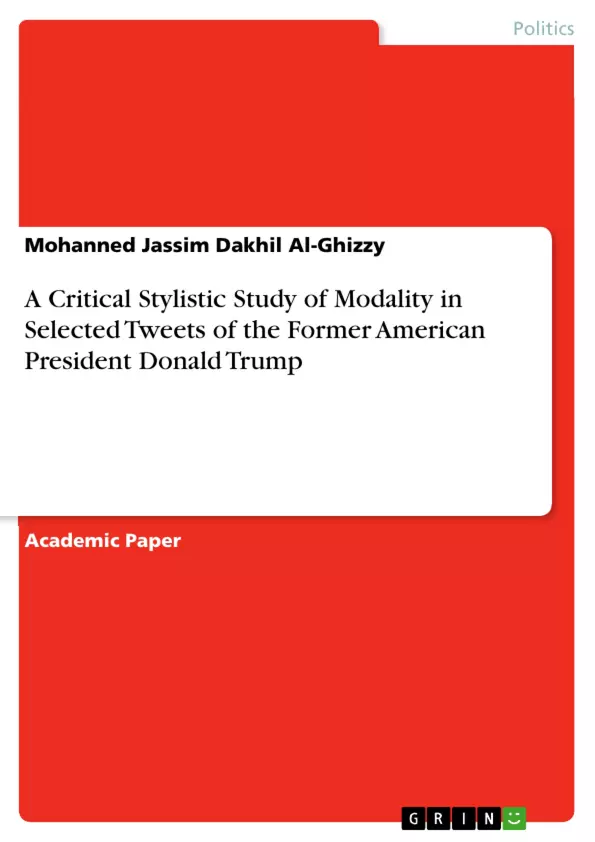This paper is an attempt to explore modality used by the Former U.S. President Donald Trump in his tweets to indicate his political and ideological intentions and goals during (2020), because it is the last year of Trump’s Presidency; and it is the year that the American elections held, and within this year Covid-19 swept the world. The critical stylistic analysis aims at uncovering Trump’s ideological outlook by identifying the extra layer of meaning in which the ideological evaluation is structured and exposing the way in which the resources of language are strategically deployed to influence and ideologically manipulate Trump’s followers’ experience of reality.
One of Jeffries’s (2010) tools which is "hypothesizing" used in analyzing modality in critical stylistics, and she also proposes some constructions that give modal meaning such as (lexical verbs, modal adjectives, modal adverbs and conditional structure), in addition to Simpson’s (1993) four categories (deontic, boulomaic, epistemic and perception).
Table of Contents
- Introduction
- Critical Stylistics
- Critical Discourse Analysis (CDA)
- Modality
Objectives and Key Themes
This paper aims to analyze the use of modality in tweets by former US President Donald Trump during the year 2020. It seeks to understand how Trump employed linguistic resources to convey his political and ideological intentions and influence the perceptions of his followers.
- The use of modality in Donald Trump's tweets
- The types of modality used in Trump's discourse
- The relationship between modality and ideology in Trump's communication
- The role of social media in shaping political discourse
- The application of critical stylistic analysis to political discourse
Chapter Summaries
- Introduction: This chapter provides an overview of the study, its objectives, and its theoretical framework. It introduces the concepts of Critical Discourse Analysis (CDA) and Critical Stylistics, emphasizing their focus on the relationship between language and power.
- Critical Stylistics: This chapter delves into the evolution and development of Critical Stylistics, highlighting its distinct approach to analyzing language and ideology. It discusses the importance of the text itself in stylistic analysis and how Jeffries's work seeks to integrate contextual features with stylistic analysis.
- Critical Discourse Analysis (CDA): This chapter explores the origins and aims of CDA, emphasizing its focus on social power, inequality, and the analysis of discourse in social and political contexts. It discusses the relationship between CDA and Critical Stylistics, highlighting their shared interest in understanding the power dynamics embedded in language.
- Modality: This chapter defines modality and its role in expressing a speaker's attitude towards the truth of a proposition. It examines different approaches to analyzing modality, including Fowler's framework and Halliday's meta-functions of language, highlighting the interpersonal function of modality.
Keywords
This study focuses on the key concepts of critical stylistics, critical discourse analysis, modality, ideology, and Donald Trump's use of social media. It examines the specific linguistic resources employed by Trump to convey his political and ideological intentions.
- Quote paper
- Mohanned Jassim Dakhil Al-Ghizzy (Author), 2023, A Critical Stylistic Study of Modality in Selected Tweets of the Former American President Donald Trump, Munich, GRIN Verlag, https://www.grin.com/document/1357540



